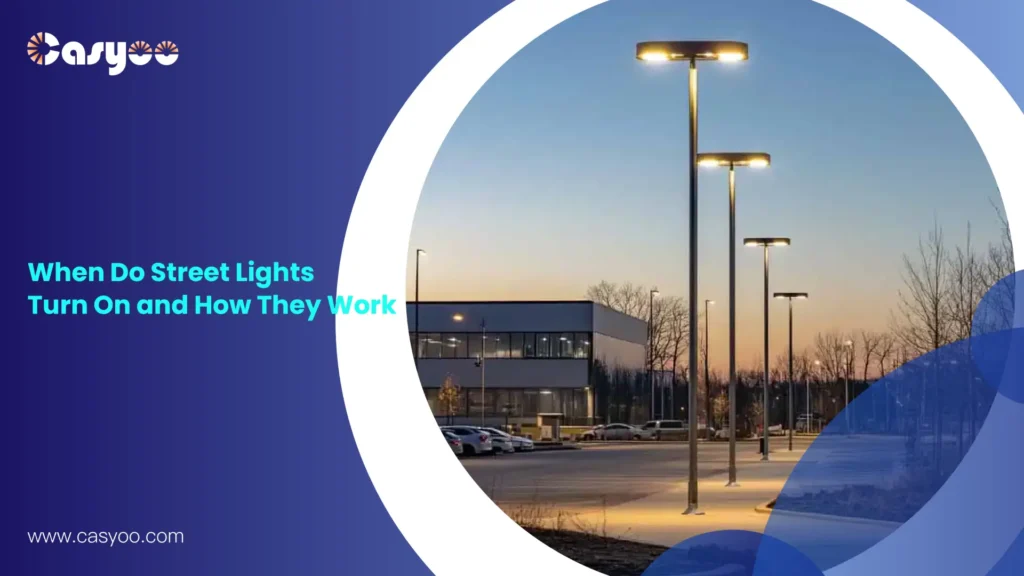
Ever wondered when those familiar streetlights flicker to life each evening? Many cities rely on timers to activate their streetlights at dusk, creating a safer and more visible environment as darkness falls. This practice not only enhances safety for pedestrians and drivers but also contributes to a sense of security in communities. While the exact time streetlights turn on can vary depending on location and specific settings, they generally coincide with sunset. In this article, we’ll delve into the fascinating world of streetlight timers, exploring how they work, their benefits, and the factors influencing their activation times.
Streetlight Timers
At the heart of most streetlighting systems lie timers – sophisticated devices programmed to activate lights at predetermined times. These timers are typically set to switch on around dusk and off again at dawn, ensuring consistent illumination throughout the night. The timer mechanism can be mechanical or electronic, with modern systems often employing digital technology for greater accuracy and flexibility.
Streetlight timers play a crucial role in maintaining order and safety within urban environments. By providing consistent illumination during nighttime hours, they deter criminal activity, improve visibility for drivers and pedestrians, and enhance overall community well-being. The predictable nature of streetlight activation also contributes to a sense of security and familiarity for residents.
Dusk Activation

Dusk activation is the most common method used for triggering streetlights. This system relies on sensors that detect the gradual decrease in ambient light as the sun sets. Once the sensor registers a sufficient drop in light levels, it sends a signal to activate the streetlights, ensuring they are illuminated just as darkness begins to fall.
The exact time of dusk activation can vary depending on factors such as latitude, season, and weather conditions. In areas closer to the equator, dusk occurs earlier than in regions farther from the equator. Similarly, during summer months, days are longer, leading to a later dusk activation time compared to winter months.
Motion Sensors
While timers provide consistent illumination throughout the night, some municipalities utilize motion sensors as an additional layer of safety and energy efficiency. These sensors detect movement within their range and trigger the activation of streetlights only when necessary.
Motion-activated streetlights are particularly beneficial in areas with low traffic volume or where security is a primary concern. By illuminating only when needed, they significantly reduce energy consumption compared to traditional timer-based systems. This technology also enhances safety by providing immediate illumination in response to movement, deterring potential criminal activity and improving visibility for pedestrians and drivers.
Energy Efficiency

Energy efficiency is a growing concern for municipalities worldwide, and streetlighting plays a significant role in overall energy consumption. Traditional incandescent bulbs are notoriously inefficient, converting only a small percentage of electricity into light. Fortunately, advancements in lighting technology have led to the widespread adoption of more energy-efficient alternatives.
LED (Light Emitting Diode) bulbs are now the preferred choice for streetlights due to their exceptional energy efficiency, long lifespan, and durability. LED bulbs consume significantly less energy than incandescent bulbs while producing a brighter and more focused light output. This shift towards LED technology has resulted in substantial energy savings for municipalities, reducing operating costs and minimizing environmental impact.
Sunset Timing
Sunset timing is a crucial factor influencing the activation time of streetlights. As the sun sets, ambient light levels gradually decrease, triggering the sensors or timers responsible for activating streetlights. The exact time of sunset varies depending on geographical location, season, and weather conditions.
Conclusion
Streetlight timers play a vital role in ensuring safety, visibility, and security within our communities. By illuminating streets at dusk and employing energy-efficient technologies like LED bulbs, municipalities can create safer environments while minimizing their environmental impact. Understanding how streetlight timers work and the factors influencing their activation times allows us to appreciate the intricate systems that contribute to the well-being of our cities.
